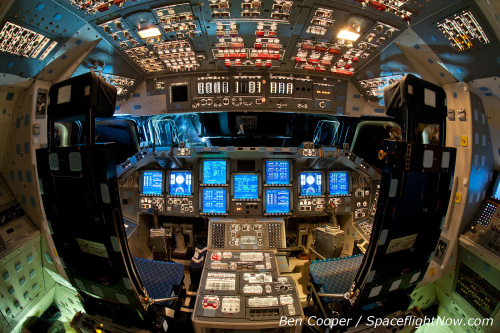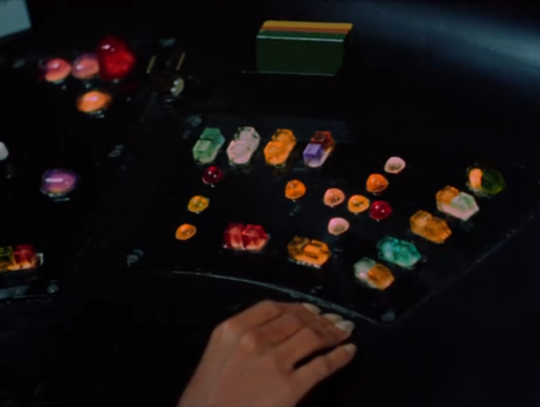This post applies that same principle to starship console technology:
swan2swan
You know what?
I’m no longer holding Star Trek or Star Wars “accountable” for their clunky-looking sixties-and-seventies future technology.
Why?
Because the Enterprise is off on a years-long voyage through space. There’s no Verizon store, no Radio Shack, no Geek Squad out there. If the Klingons fire photon torpedoes and the bridge shakes and Spock’s head bangs against the fancy iPad72 touchscreen and cracks the glass, the ship’s toast. If Han Solo’s fingerprints get all over the starchart and the touch-calibration is off by half a centimeter, the Falcon is going right into a star. But if Mister Worf accidentally twists the command knob too hard and pops it off, he can just screw that thing right back on and it will keep working. Dust gets in there? Take it apart and clean it out. All the plugs are big and universal, all the power cells are functional and have a decent battery life, and nothing is built to expire in the next six months so you have to buy a new one.
That tech isn’t anachronistic or suffering a bad case of Zeerust–it’s practical, effective, and it works. Apple tried launching its own space exploration craft, it had to come back for full repairs within three months, and then it had to be upgraded over the next two.
But this? This is just good, long-lasting, fully-functional, and reliable craftsmanship.
alexkablob
The actual real-life space shuttles’ electronics looked pretty much like that for their entire lifespan and this is exactly why.

Obviously a touchscreen on a starship wouldn't be as fragile as an iPad, and in fact with materials science of the future it would likely be a lot more durable than anything we can build today. And a touchscreen is a lot more versatile and configurable than a console with physical buttons and switches. But it still doesn't change the fact that if a computer console consists entirely of one big touchscreen ala Star Trek TNG and onward, and said screen takes sufficient damage, the entire console becomes useless. And then there's holographic terminals, which are even more versatile and configurable than touchscreens, especially if they're advanced enough to act as touch controls themselves ala Mass Effect or Dead Space, but as the trope's page image says, "And when the power fails, the whole thing goes dark.* Granted, any sensibly designed holoscreen should be built with multiple redundant emitters and power sources independent of the main power, but it still seems more fragile and prone to failure than a physical console.
So did the Son'a from Star Trek Insurrection have the right idea, with their preference for physical buttons, knobs and switches on their consoles, a stark contrast to Federation over-reliance on touchscreens? Is Mass Effect's ubiquitous touchscreens, and holoscreens, and holo-touchscreens, while cool and futuristic-looking (and are even advanced enough to provide tactile feedback), an example of poor engineering? Or is the best console design a balance between old and new: a combination of rustic and reliable buttons and switches, more advanced and configurable physical touchscreens, and even more advanced holographic emitters? Possibly something along the lines of what we see in Prometheus (minus holoscreens of course), which I liked because it retcons the 80's aesthetics of the Alien series' tech without looking too advanced and out of place with what was already established in prior films.

